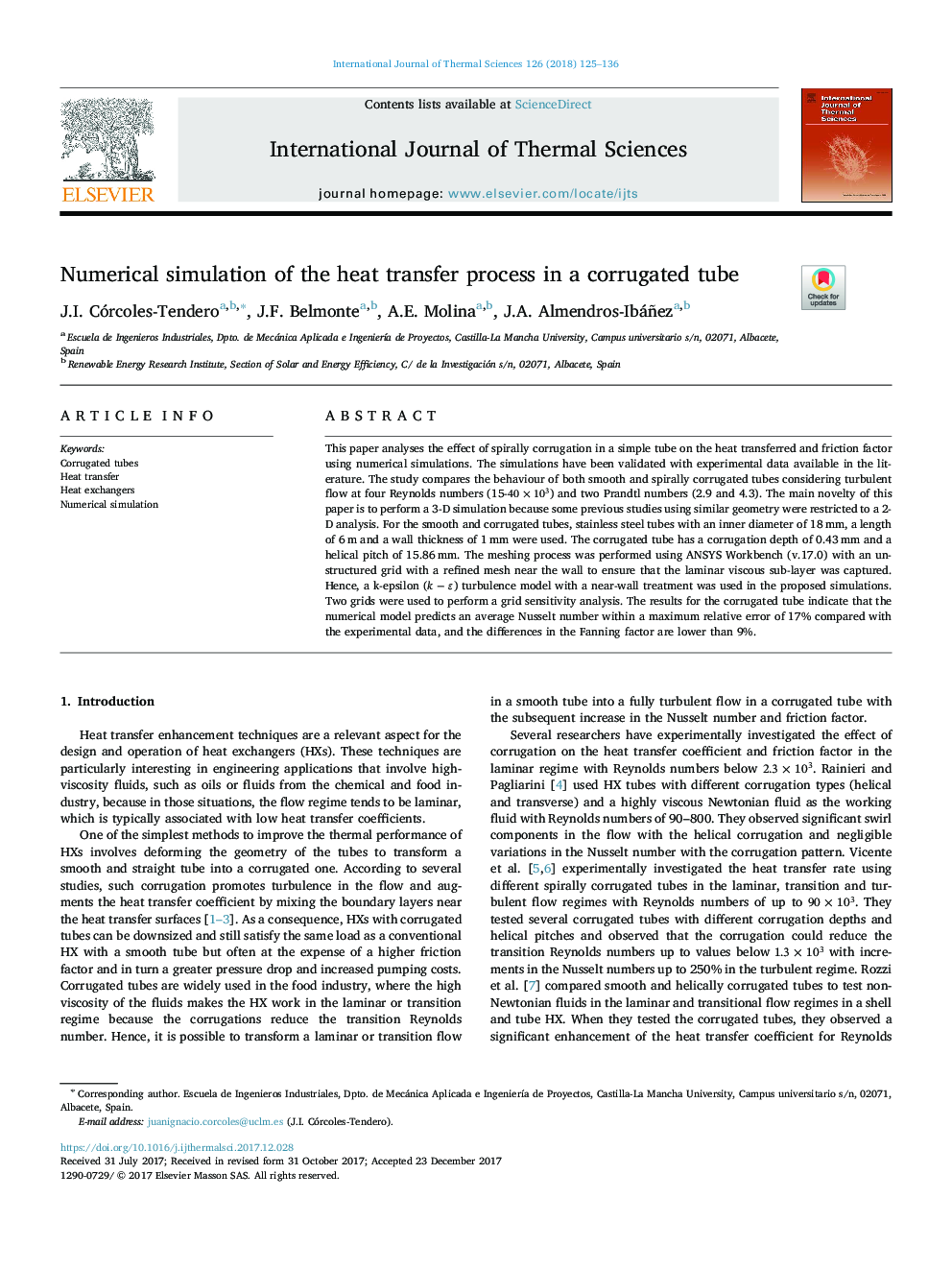| Article ID | Journal | Published Year | Pages | File Type |
|---|---|---|---|---|
| 7060796 | International Journal of Thermal Sciences | 2018 | 12 Pages |
Abstract
This paper analyses the effect of spirally corrugation in a simple tube on the heat transferred and friction factor using numerical simulations. The simulations have been validated with experimental data available in the literature. The study compares the behaviour of both smooth and spirally corrugated tubes considering turbulent flow at four Reynolds numbers (15-40Ã103) and two Prandtl numbers (2.9 and 4.3). The main novelty of this paper is to perform a 3-D simulation because some previous studies using similar geometry were restricted to a 2-D analysis. For the smooth and corrugated tubes, stainless steel tubes with an inner diameter of 18â¯mm, a length of 6â¯m and a wall thickness of 1â¯mm were used. The corrugated tube has a corrugation depth of 0.43â¯mm and a helical pitch of 15.86â¯mm. The meshing process was performed using ANSYS Workbench (v.17.0) with an unstructured grid with a refined mesh near the wall to ensure that the laminar viscous sub-layer was captured. Hence, a k-epsilon (kâε) turbulence model with a near-wall treatment was used in the proposed simulations. Two grids were used to perform a grid sensitivity analysis. The results for the corrugated tube indicate that the numerical model predicts an average Nusselt number within a maximum relative error of 17% compared with the experimental data, and the differences in the Fanning factor are lower than 9%.
Related Topics
Physical Sciences and Engineering
Chemical Engineering
Fluid Flow and Transfer Processes
Authors
J.I. Córcoles-Tendero, J.F. Belmonte, A.E. Molina, J.A. Almendros-Ibáñez,
